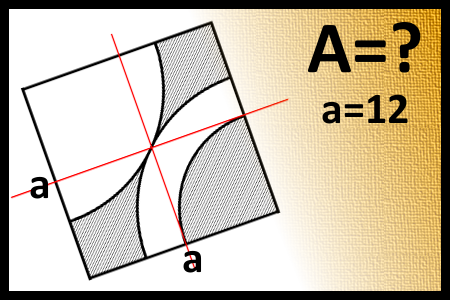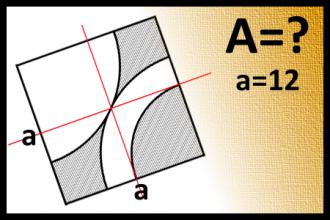Find the area of the shaded figure
Express result to the accuracy of 3 decimal.Correct answers: 89
The first user who solved this task is Djordje Timotijevic.
#brainteasers #math

Mom, what's sex?
A little boy returning home from his first day at school said to his mother, "Mom, what's sex?"
His mother, who believed in all the most modern educational theories, gave him a detailed explanation, covering all aspects of the tricky subject.
When she had finished, the little lad produced an enrollment form which he had brought home from school and said, "Yes, but how am I going to get all that into this one little square?"

